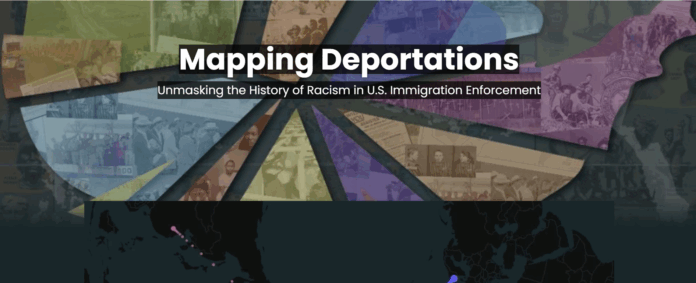Vidya Sethuraman
India Post News Service
American Community Media (ACoM) held an online briefing on Sep 19th in which the panelists used the newly launched “Deportation Maps” website to present deportation data from 1895 to the present and expose the long-standing racial bias in the system. Three scholars at UCLA’s Center for Immigration Law and Policy and the Million Dollar Hoods Project have spent years gathering and analyzing deportation data, producing maps and visualizations that trace policies back to 1895. Their work unmasks patterns of deportation that explain where we are today, and why.
Kelly Lytle Hernández, professor of history at UCLA and founder of Million Dollar Hoods, pointed out that there were three major forced migrations in American history, including the forced migration of indigenous peoples, the Atlantic slave trade, and the large-scale deportations during World War II and beyond. She recalled that she had been conceiving this project since 2019 and realized that although there were dynamic maps of indigenous territorial dispossession and slave trade, there was a lack of complete visual research on deportations. As a historian, she knew that more than 50 million deportation orders had been issued in the history of the United States, but had never been systematically presented. Therefore, she initiated an interdisciplinary collaboration and took five years to complete the “Deportation Map” so that people can more clearly see the long-term policy patterns and data context.
Mariah Tso shows that between 1895 and 2022, the United States issued more than 8 million deportation orders, more than 96% of which targeted people of non-white origin. Since 1916, Mexicans have continued to be the largest group of deportees. She explained that this is not simply due to geographical proximity, but a direct result of biased immigration laws and policies. She also emphasized that deportation is only one of many forced removal methods, including “voluntary departure,” exclusion orders, and in recent years public health deportations, and should be included in the complete framework for understanding the history of deportation in the United States.
Ahilan Arulanantham, co-director of the Center for Immigration Law and Policy (CILP) at the UCLA School of Law, said that he has long challenged the federal government’s discriminatory immigration policies during his 25-year career as a lawyer. He mentioned that even under the Biden administration, discrimination was still obvious. For example, the Article 42 deportation order is strict against Haitian and Central American immigrants, but Ukrainians are exempted, showing that the same policy has double standards for different ethnic groups. He also pointed out that the “illegal re-entry crime” passed in 1929 originated from the period when eugenics thought was at its peak and had obvious racial motives. Even though its discriminatory background has long been revealed, the government continues to invoke this law for deportations. He called on society to face up to the historical prejudices behind the law. Only by exposing the past can we avoid the recurrence of discrimination.







